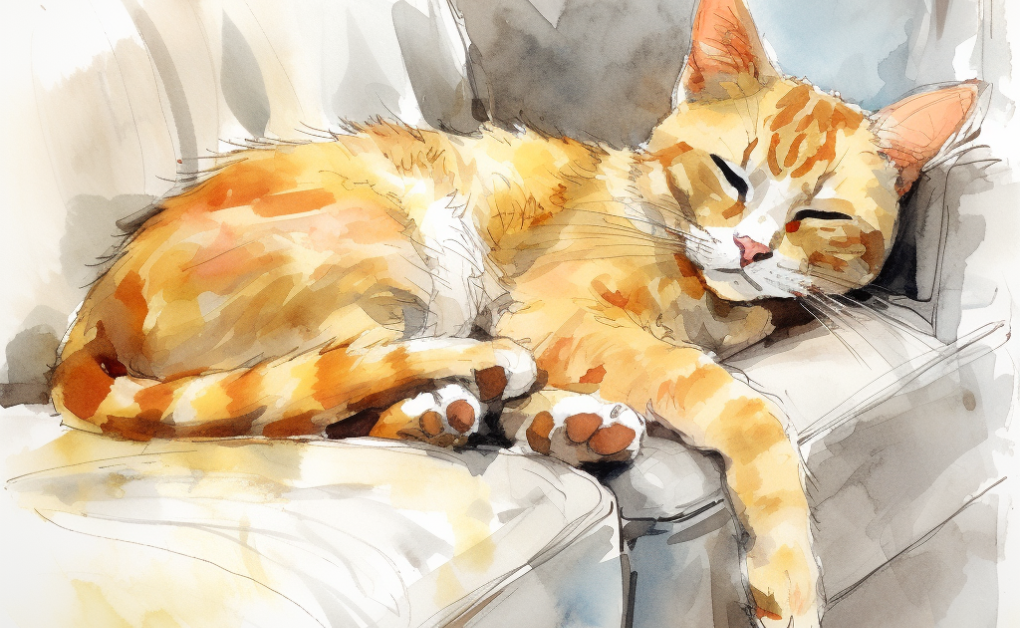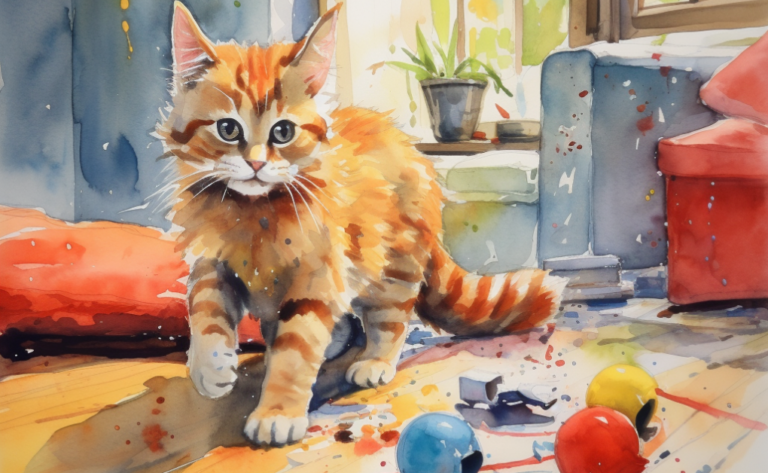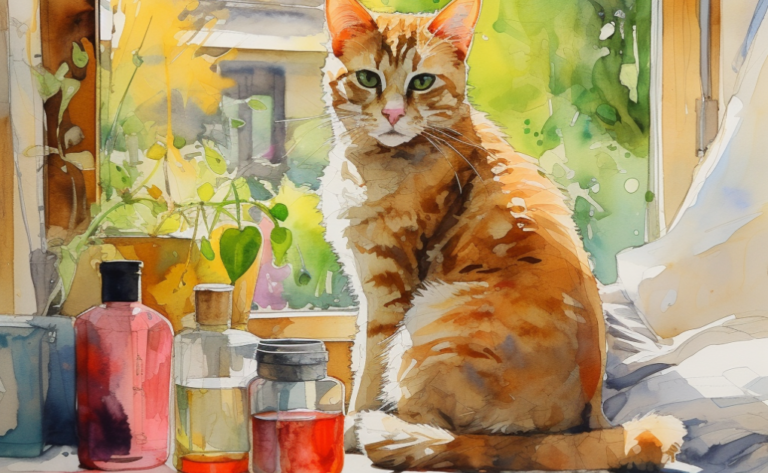What is Aural Hematoma in Cats?
What is it?
How is it Treated?
Breed Predispositions
Scottish Fold American Shorthair Himalayan Persian
Introduction
While giving her energetic Bengal cat, Daisy, a good ear rub, Maria noticed an unusual swelling on the cat’s ear flap. Worried about her feline companion’s well-being, she scheduled an appointment with her veterinarian for a thorough examination. After a detailed assessment, the vet diagnosed Daisy with an aural hematoma, a condition that can affect cats of any age or breed.
An aural hematoma in cats refers to the accumulation of blood within the pinna or the outer part of the cat’s ear. This situation results in a swollen, puffy-looking ear due to the rupture of small blood vessels inside the ear. Various factors can trigger these ruptures, and the pooled blood within the space leads to discomfort and alters the normal structure of the ear. It is crucial to understand that an aural hematoma is a collection of symptoms of an underlying problem rather than a disease in itself.
Without appropriate treatment or emergency care, this condition can lead to fibrosis, a permanent alteration in the cat’s ear shape. This is commonly known as the “cauliflower ear” and involves changes in the cartilage in the ear due to the chronic condition of untreated hematoma.
Types of Aural Hematomas in Cats
Aural hematomas in cats are typically classified based on their location and whether they are acute or chronic:
- Acute Aural Hematoma: This is a sudden onset of swelling in the ear flap. The blood-filled swelling can be small or encompass the entire pinna. Cats with acute aural hematomas often exhibit discomfort and may shake their head or paw at the affected ear.
- Chronic Aural Hematoma: Chronic hematomas persist for longer and may have a more complex underlying cause. They can result from an acute hematoma not properly treated, or they may have developed slowly over time. In these cases, the swelling may become firm, and the ear may become distorted or shriveled.
Regarding location, a hematoma can occur in either the right ear, the left ear, or both (bilateral). The size of the hematoma can also vary, ranging from a small spot to the entire pinna being affected.
Causes of Aural Hematoma in Cats
A cat’s aural ear hematoma arises when blood vessels in the outer part of the ear, known as the ear flap, rupture. This rupture causes blood to accumulate in the area sandwiched between the skin and cartilage. The factors contributing to this condition can be grouped as follows:
Physical Trauma
One of the most prevalent causes of aural hematomas in cats is trauma. This can occur if the cat’s ear suffers injury during a clash with another animal or if the cat has developed a habit of scratching its head or shaking it due to irritation or itchiness.
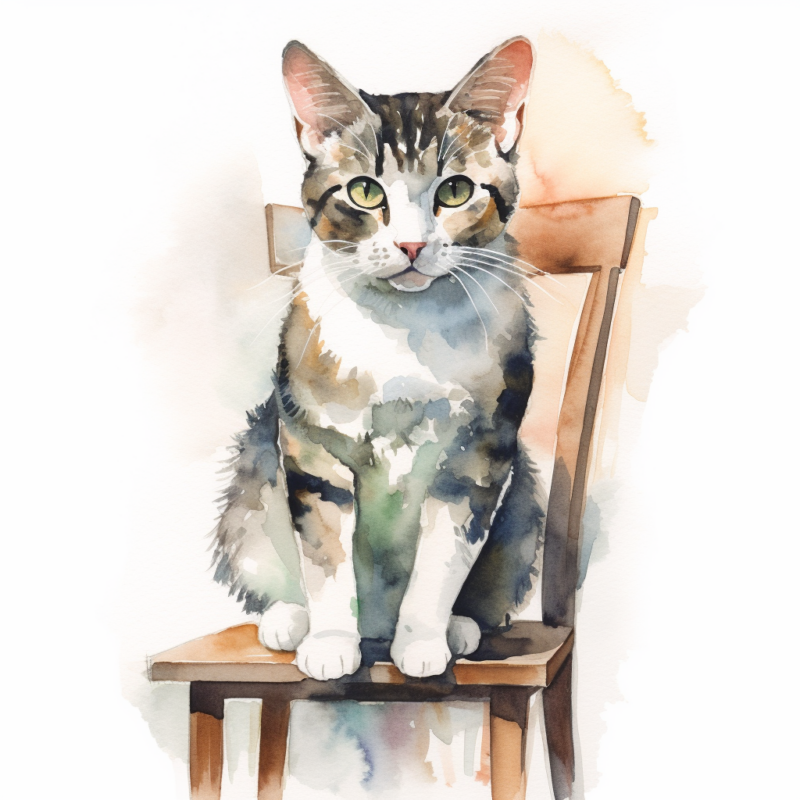
Parasites
Parasites, like ear mites, can induce severe itching and inflammation, provoking vigorous head shaking or scratching. Such actions can lead to ruptured blood vessels, which in turn lead to the formation of an aural hematoma.
Allergic Reactions
Some cats may be allergic to certain substances, such as food, dust, or pollen, leading to skin allergies. These allergies can trigger inflammation and itching of the ear, leading to scratching and shaking. This can subsequently cause the ear flap to swell and a hematoma to form.
Underlying Health Conditions
Underlying health issues like ear infections, tumors, or polyps can induce discomfort and trigger head shaking or scratching. These actions increase the likelihood of developing an aural hematoma. Sometimes, a foreign body lodged in the ear canal can cause ear hematomas.
Unidentifiable Causes
The precise cause of aural hematomas in cats might remain unknown. Some cats might be predisposed to develop them due to age, breed, or overall health. If left untreated, a hematoma will eventually damage the underside of the ear. Prolonged damage over time may cause further damage and lead to the formation of a passageway through the hematoma due to an ear infection.
Symptoms of Cat Ear Hematoma
Typically, cats with aural hematoma exhibit several symptoms, including:
- Prominent swelling or bulging in the outer part of the ear, giving the ear flap a distended appearance.
- Experiencing ear discomfort or pain, often leading to frequent scratching or pawing at the problematic ear, and violet shaking causing such discomfort.
- Engaging in incessant head shaking or tilting and exhibiting unusual head movements indicative of discomfort or an attempt to alleviate the same.
- Showing signs of loss of balance, likely due to the pain or pressure in the ear affecting the cat’s equilibrium.
- Manifesting behavioral changes prompted by pain or discomfort, including symptoms such as retreating, reduced interaction, or heightened irritability.
- Experiencing a decreased appetite, often due to the discomfort experienced while eating.
- Exhibiting discharge from the ear, or sometimes, blood may be present.
In extreme cases, cats might display signs of distress, such as hiding, vocalizing, or exhibiting aggressive behavior due to the associated pain. It’s noteworthy that cats prone to ear hematomas usually exhibit these symptoms.
Diagnosis of Ear Hematoma in Cats
The diagnosis of aural hematoma in cats typically encompasses several phases:
Clinical Assessment
The first step in diagnosing an aural hematoma often involves a clinical evaluation. The veterinarian inspects the outer surface of the cat’s ear for any visible swelling or changes in color. They might also touch and feel the ear to identify any fluid accumulation indicative of a hematoma on the inner surface.
Otoscopic Evaluation
To further assess the ear issues, the veterinarian might employ an otoscope with a light and magnifying lens to get a closer look inside the ear canal and confirm a hematoma’s existence.
Aspiration and Cytological Analysis
The vet could opt for a technique involving a needle to draw fluid from the swollen ear – a process known as aspiration. This extracted fluid can be microscopically analyzed (cytology) to confirm whether the fluid consists of blood, ruling out other fluids, such as pus, which could signify a different condition.
Imaging Techniques
While not a routine procedure for diagnosing an aural hematoma, in some complex cases, the vet may employ radiography or ultrasound to visualize the ear’s cartilage and structures better, eliminating other potential causes of ear swelling, like tumors.
Probing for Underlying Causes
If an aural hematoma is suspected to result from an underlying issue such as ear mites or an infection, additional diagnostic measures may be necessary. These may encompass skin scrapings from the ear for microscopic examination or culture to identify infectious organisms. This diagnosis can often lead to aural hematoma surgery, where incisions are made to drain as the ear heals. The surgical site may be left open so fluid does not build up again, reducing the likelihood of scar tissue formation. This thorough evaluation can help assess the length of the hematoma and the blood vessels’ health, allowing for a comprehensive treatment plan.
Treating Aural Hematoma in Cats
The main objective of treating aural hematoma in cats is to alleviate discomfort while addressing any root causes of the hematoma. Here are a few common treatment approaches:
Needle Aspiration
This minimally invasive procedure involves a veterinary surgeon using a needle and syringe to extract the blood from the hematoma. Since hematomas tend to refill, this procedure might need to be repeated several times. However, needle aspiration is a straightforward, more economical treatment that can immediately relieve the affected ear.
Surgical Intervention
In cases where the hematoma is large, stubborn, or causing significant discomfort, ear hematoma surgery may be necessary. The vet or a veterinary surgeon will make an incision in the ear flap to drain the pooled blood and may place a temporary drain to continue draining any accumulating fluid. The ear is then sutured to help it heal properly. While this option is more invasive and costly than needle aspiration, it can offer a more definitive resolution.
Corticosteroid Injections
In certain instances, vets might decide to inject corticosteroids into the hematoma. Steroids can reduce inflammation and stimulate the body’s ability to reabsorb the accumulated blood. This method is less invasive than surgery but may entail side effects from the steroids.
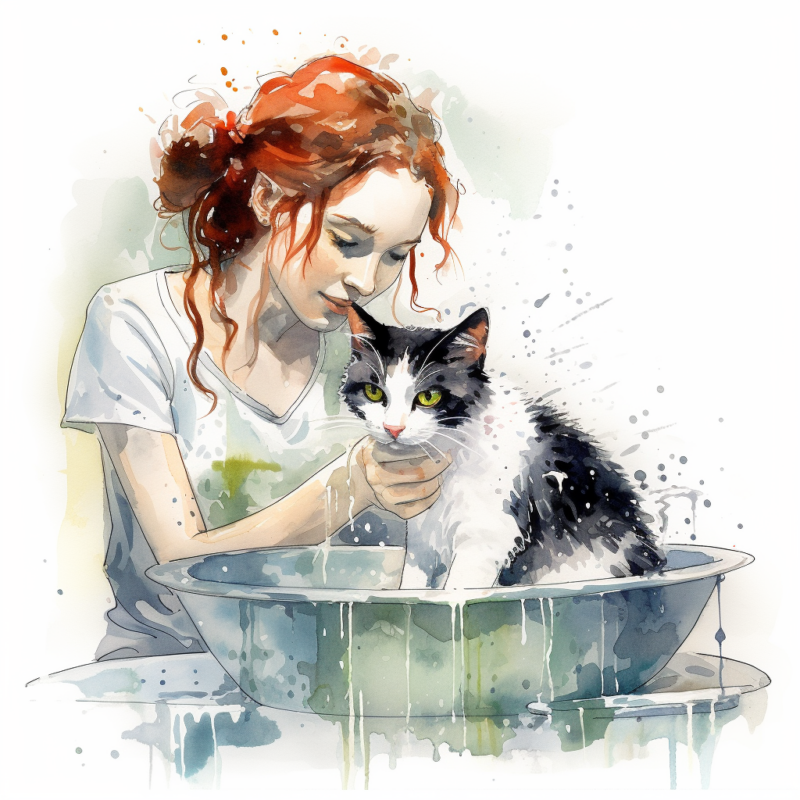
Treatment of the Underlying Causes
If an underlying issue, such as an ear infection or mites, is detected, it must be addressed in tandem with the hematoma treatment. This could involve medicated ear drops, antibiotics, or other treatments as the vet prescribes.
Regardless of the selected treatment route, follow-up visits will be necessary to monitor the cat’s progress and ensure that the ear hematoma will eventually heal. These check-ups ensure the larger hematomas and any underlying issues are resolved. If left to heal without proper care, the ear might not recover adequately, and the condition could recur. It is, therefore, necessary to recheck the ear canal to be sure the treatment was successful, and the ear heals without complications.
After the procedure, the ear might be bandaged and secured to minimize discomfort and facilitate healing.
Prevention of Feline Aural Hematoma
Preventing aural hematomas in cats involves taking proactive steps to minimize the risk factors associated with the condition. Here are some key preventive measures:
Regular Vet Check-ups
Routine veterinary check-ups can identify potential issues early, such as ear infections or parasites, that could lead to aural hematoma if left untreated. Your vet can thoroughly check your cat’s ears and provide appropriate treatment.
Parasite Control
Regular parasite control treatments can prevent infestations of ear mites, a common cause of ear scratching and shaking, and thus aural hematomas.
Regular Ear Checks at Home
As a pet owner, you can regularly inspect your cat’s ears for signs of infection, inflammation, parasites, or foreign bodies. If your cat is excessively scratching or shaking its head, seek veterinary attention promptly.
Safe Environment
Creating a safe environment for your cat can help minimize the risk of trauma, which could lead to aural hematoma. For indoor cats, ensuring your home is cat-friendly with no sharp edges or small spaces where the cat can injure its ears is beneficial. Supervision during outdoor time can help prevent fights or traumas for outdoor cats.
Monitor for Allergies
Some cats may scratch their ears excessively due to allergies in food or environmental reasons.. If you suspect your cat has allergies, consult your vet for diagnosis and treatment.
Remember, early detection and treatment are key in preventing the progression to conditions like aural hematoma. If you notice any changes in your cat’s behavior or physical condition, consult a veterinarian.
Frequently Asked Questions
Disclaimer: The information provided on this veterinary website is intended for general educational purposes only and should not be considered as a substitute for professional veterinary advice, diagnosis, or treatment. Always consult a licensed veterinarian for any concerns or questions regarding the health and well-being of your pet. This website does not claim to cover every possible situation or provide exhaustive knowledge on the subjects presented. The owners and contributors of this website are not responsible for any harm or loss that may result from the use or misuse of the information provided herein.

